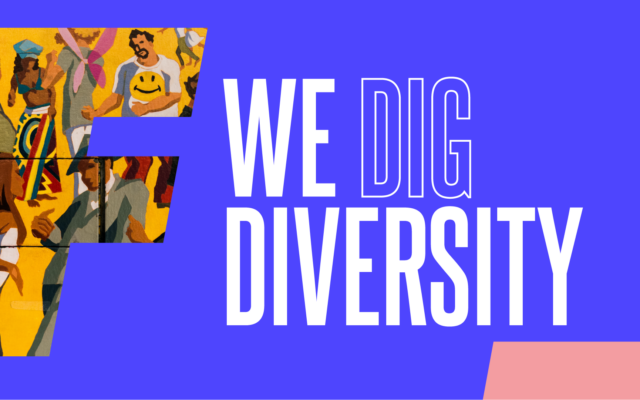Not just June: Making your workplace more gender-inclusive all year round!

In June, many of us noticed how our favourite brands pulled out the stops to show their support for the LGBTQ+ Community during Pride month. Companies like Starbucks, Instagram and Banana Republic donned the rainbow flag through colourful campaigns, limited edition collections and funky hashtags to raise awareness of the LGBTQ+ community and to celebrate their history. But where are they all now?
The abrupt end to pride month has been noticed by internet meme pages and Twitter clowns alike and has prompted businesses to start thinking about more enduring initiatives.
Now’s the time to be talking about how these celebrations of diversity and inclusiveness should be integrated into our daily lives on a more permanent basis. After all, the LGBTQ+ community doesn’t just vanish into thin air on July 1st. Businesses looking to embrace progress and enhance the wellbeing of their teams should be thinking more actively about how they can be more gender inclusive.
What is gender-inclusivity?
At its core, being gender inclusive means being able to recognise different genders outside the ‘male’ and ‘female’ binary and adapt behaviours to make people with different identities feel seen and understood.
According to Stonewall, it’s estimated that 1% of the UK population identifies as trans or non-binary (neither male or female), which accounts for around 600,000 people. This estimate will be replaced by data collected from the 2021 census as of next year, and this was the first ever census that recognised gender identities that weren’t only ‘male’ or ‘female’. Such progress should be mirrored in the ways forward-thinking businesses operate to boost productivity and positive wellbeing through diversity and inclusion.
Why is important?
Actively thinking about gender inclusion will be an additional string to a business’s bow, boosting productivity, positive mental health and enriching employees’ understanding of their colleagues and therefore consumers. Feeling seen, included, and accepted is important to every single human being and should be protected in every workplace. Extending our knowledge, improving our attitudes, and correcting our behaviours will only have positive results for our personal growth, and for the growth of business.
How can we make businesses more gender inclusive?
Language
Being more gender inclusive is a practice that can start with changing our language. It’s usual to hear things like “hey guys”, or “how are you guys doing today?” but it would be better and more inclusive to say “hey everyone”, or “how is everyone today?”. Simple changes to our daily language would benefit those around us by actively practising inclusivity and avoid ‘manning’ the way we refer to people. Words carry power and we should always be mindful of how we talk to colleagues, clients, and customers.
When it comes to language and gender, it’s mostly a habit. We are used to referring to someone as ‘he/him’ or ‘she/her’- ‘he said this’, ‘I think that belongs to her’, but asking how someone wants to be called and referring to them as such just takes practise and active thinking. Pronouns are an important way of identifying someone and we should be aware of the pronouns that exist outside ‘he/him’ and ‘she/her’. Those can include:
- They/them/theirs
- Ze/hir/Hirs/Zirs
- Ve/Ver/Vis/Vers
These are some gender-neutral pronouns. Asking a colleague or a new client for their pronouns is a great way of practising gender inclusivity and demonstrates an active effort to recognise different identities. Establishing your own pronouns in email signatures or work profiles can also contribute to this and help colleagues practise being gender aware.
Training, training, training
This applies to everyone, regardless of how clued up you consider yourself on the subject. Updating training programmes, providing colleagues with relevant resources, and creating open dialogue about gender in the workplace can help improve general understanding of gender and how to be inclusive. This doesn’t just mean using buzzwords or learning what’s offensive and what’s not- it’s about changing perceptions for better understanding. For example, at UNLIMITED all employees benefit by learning about something called ‘implicit bias’, which is addressed in our diversity training. This basically means stereotyping which is easy to do when representation of different genders in the media is scarce. Enriching your knowledge of gender diversity, updating resources for employees, and inviting experts to talk on the subject will contribute towards creating a progressive workplace culture.
These are all things we should be starting to learn in everyday interactions and setting a good example through your business will help encourage more human understanding.
– Elaura Lacey




